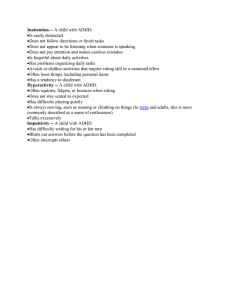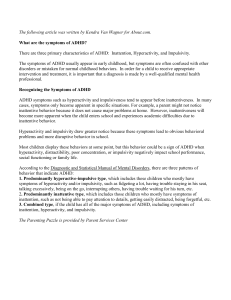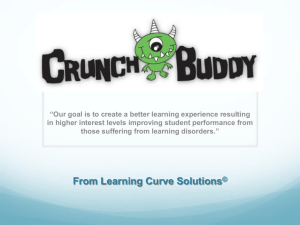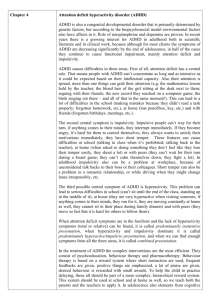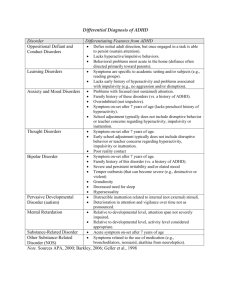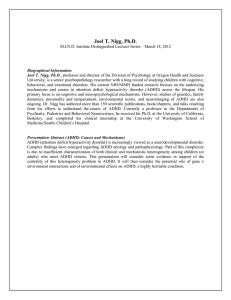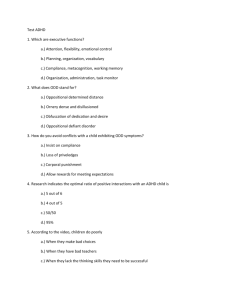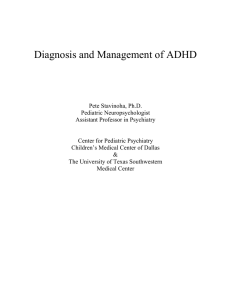ADHD Kids Become ADHD Adults: Diagnosing our Nation's Next
advertisement
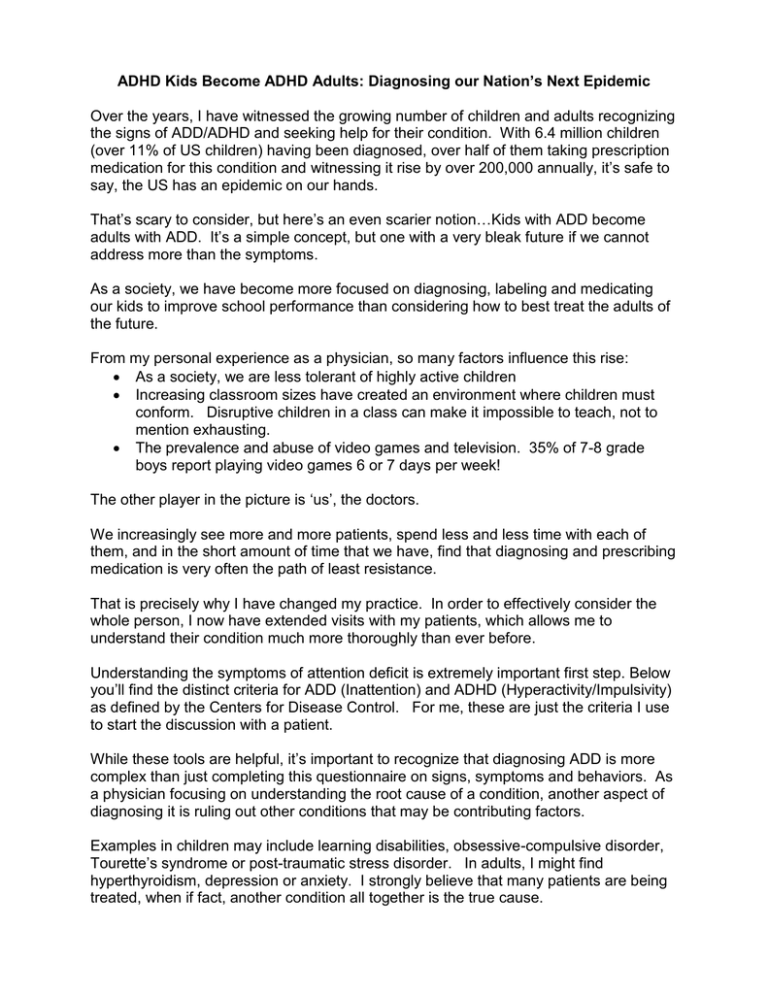
ADHD Kids Become ADHD Adults: Diagnosing our Nation’s Next Epidemic Over the years, I have witnessed the growing number of children and adults recognizing the signs of ADD/ADHD and seeking help for their condition. With 6.4 million children (over 11% of US children) having been diagnosed, over half of them taking prescription medication for this condition and witnessing it rise by over 200,000 annually, it’s safe to say, the US has an epidemic on our hands. That’s scary to consider, but here’s an even scarier notion…Kids with ADD become adults with ADD. It’s a simple concept, but one with a very bleak future if we cannot address more than the symptoms. As a society, we have become more focused on diagnosing, labeling and medicating our kids to improve school performance than considering how to best treat the adults of the future. From my personal experience as a physician, so many factors influence this rise: As a society, we are less tolerant of highly active children Increasing classroom sizes have created an environment where children must conform. Disruptive children in a class can make it impossible to teach, not to mention exhausting. The prevalence and abuse of video games and television. 35% of 7-8 grade boys report playing video games 6 or 7 days per week! The other player in the picture is ‘us’, the doctors. We increasingly see more and more patients, spend less and less time with each of them, and in the short amount of time that we have, find that diagnosing and prescribing medication is very often the path of least resistance. That is precisely why I have changed my practice. In order to effectively consider the whole person, I now have extended visits with my patients, which allows me to understand their condition much more thoroughly than ever before. Understanding the symptoms of attention deficit is extremely important first step. Below you’ll find the distinct criteria for ADD (Inattention) and ADHD (Hyperactivity/Impulsivity) as defined by the Centers for Disease Control. For me, these are just the criteria I use to start the discussion with a patient. While these tools are helpful, it’s important to recognize that diagnosing ADD is more complex than just completing this questionnaire on signs, symptoms and behaviors. As a physician focusing on understanding the root cause of a condition, another aspect of diagnosing it is ruling out other conditions that may be contributing factors. Examples in children may include learning disabilities, obsessive-compulsive disorder, Tourette’s syndrome or post-traumatic stress disorder. In adults, I might find hyperthyroidism, depression or anxiety. I strongly believe that many patients are being treated, when if fact, another condition all together is the true cause. All too often, I find that children and adults are misdiagnosed. This is why it is critical to work with a physician that knows your family, takes time to better understand your circumstances and is familiar with varied approaches that match your philosophy regarding treatment. When considering the root cause approach, there is a whole host of additional conditions that can result in similar symptoms including diet and nutrition, allergies, chronic constipation, frequent infections/antibiotic use, IBS to name a few. ADD and ADHD Diagnosis Criteria US Centers for Disease Control Inattention (Attention Deficit Disorder) Six or more of the following symptoms of inattention have been present for at least 6 months to a point that is inappropriate for developmental level: o o o o o o o o o Often does not give close attention to details or makes careless mistakes in schoolwork, work, or other activities. Often has trouble keeping attention on tasks or play activities. Often does not seem to listen when spoken to directly. Often does not follow through on instructions and fails to finish schoolwork, chores, or duties in the workplace (loses focus, gets sidetracked). Often has trouble organizing activities. Often avoids, dislikes, or doesn't want to do things that take a lot of mental effort for a long period of time (such as schoolwork or homework). Often loses things needed for tasks and activities (e.g. toys, school assignments, pencils, books, or tools). Is often easily distracted. Is often forgetful in daily activities. Hyperactivity / Impulsivity (ADHD - Attention Deficit Hyperactivity Disorder) Six or more of the following symptoms of hyperactivity-impulsivity have been present for at least 6 months to an extent that is disruptive and inappropriate for developmental level o o o o o o o o Often fidgets with hands or feet or squirms in seat when sitting still is expected. Often gets up from seat when remaining in seat is expected. Often excessively runs about or climbs when and where it is not appropriate (adolescents or adults may feel very restless). Often has trouble playing or doing leisure activities quietly. Is often "on the go" or often acts as if "driven by a motor". Often talks excessively. Often blurts out answers before questions have been finished. Often has trouble waiting one's turn. o Often interrupts or intrudes on others (e.g., butts into conversations or games). References: Pro-Con website. Video Games & Youth Violence. http://videogames.procon.org/view.resource.php?resourceID=003627 Centers for Disease Control and Prevention. ADD/ADHD Symptoms and Diagnosis. http://www.cdc.gov/ncbddd/adhd/diagnosis.html Child Mind Institute. Most Common Misdiagnoses in Children. http://www.childmind.org/en/posts/articles/2013-4-9-most-common-misdiagnoses-children
